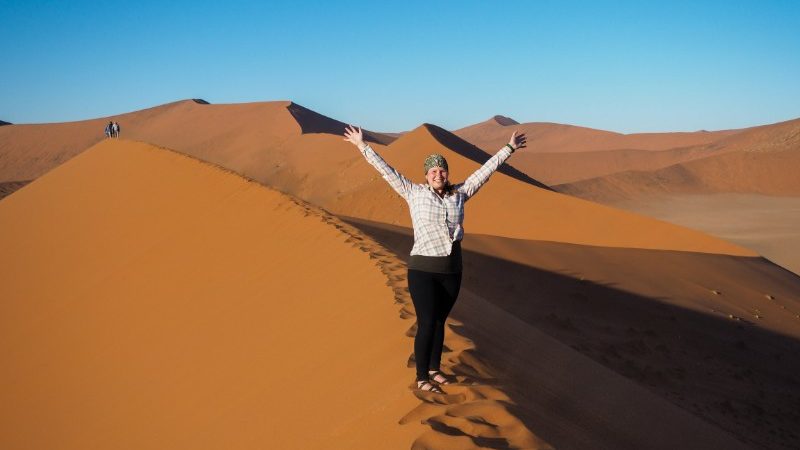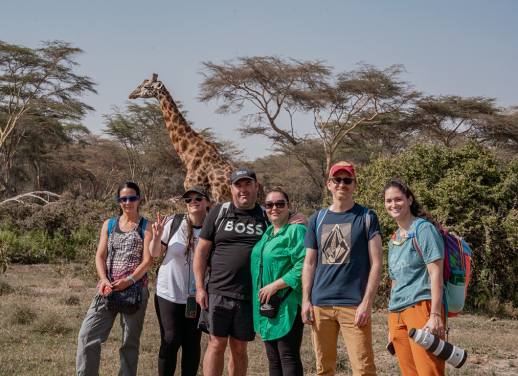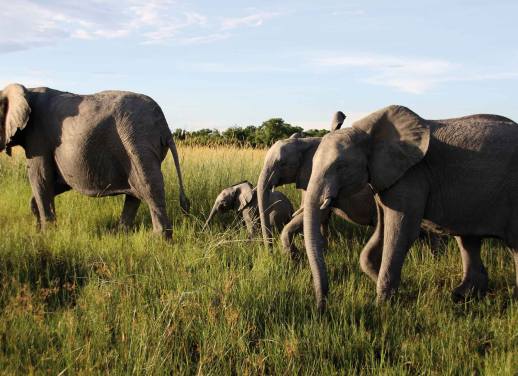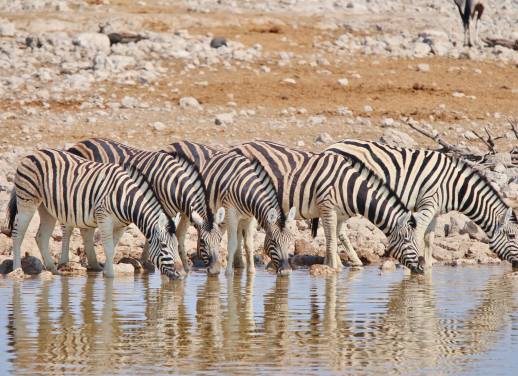Africa. It’s on almost every traveler’s bucket list because of its unique wildlife, history, and cultures.
But the challenge to planning a trip to Africa can be deciding where to start – Africa, after all, is a HUGE place; a whole continent made up of more than 50 very different countries. So how on earth do you decide which one to visit first?
If I can make a suggestion, I would tell you to start in Namibia.
Namibia, located on the southwestern coast of the African continent, makes for a great introduction to this fascinating part of the world with its stunning landscapes and abundant wildlife.
Not convinced? Here are all the reasons why Namibia is a great place to start your adventures in Africa.
EXPLORE OUR RANGE OF SMALL GROUP ADVENTURES THROUGH NAMIBIA NOW
1. It’s a safe and easy place to travel

Namibia by night.
Namibia is, in general, a very safe country in which to travel. It is politically stable, and ranked at #43 on the 2018 Global Peace Index. It’s easy to navigate, has a developed tourism infrastructure, and can be visited visa-free for many nationalities (including people from Australia, the US, Canada, and the UK).
Whether you’re camping or staying in lodges throughout Namibia, you can expect good, clean accommodations with hot water and Western toilets – most campsites even have beautiful pools and full-service bars!
RELATED: 10 FACTS YOU PROBABLY DON’T KNOW ABOUT NAMIBIA
2. The landscapes are out of this world

The skeletal trees at Deadvlei.
A lot of people assume that Namibia is just all desert – but this isn’t really true. The country has all sorts of different landscapes, from towering orange sand dunes to salt flats to pink lakes to eerie coastlines.
Here are just a few of the amazing natural places you can visit:
Fish River Canyon – Fun fact for you: the ancient Fish River Canyon in southern Namibia is the second-largest natural canyon in the world, second only to the Grand Canyon in the United States.
Namib-Naukluft National Park – This national park covers more than 19,000 square miles in central Namibia, making it one of the largest game parks in the world. It’s home to the tallest sand dunes in the world, too, and popular spots like Sossusvlei (where people climb Dune 45 for sunrise) and Deadvlei, where petrified camel thorn trees stand like ghostly skeletons.
SUBSCRIBE TO INTREPID’S NEWSLETTER FOR TRAVEL STORIES, COMPETITIONS, GIVEAWAYS & MORE
Walvis Bay – Where you can find pink lakes and pinker flamingos.
The Skeleton Coast – Where the sand dunes meet the sea. This stretch of coastline in northern Namibia can be tricky to get to, but it’s often a favorite with visitors. You can expect to find foggy mornings and the remains of ships dashed along the sand; there’s a reason that this region was originally given names like “The Gates of Hell” by sailors.
Plus, almost wherever you are in Namibia, you’ll be treated to some incredible night skies filled with stars.
JOIN US ON OUR 13-DAY NAMIBIA DISCOVERY ADVENTURE NOW
3. You’ll have amazing wildlife encounters
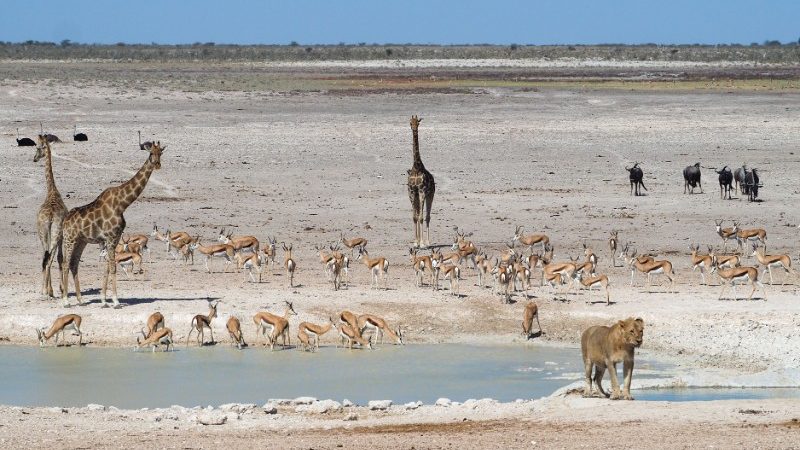
The most epic wildlife photo ever??
Most people assume that in order to go on a “good” safari you need to go somewhere like Kruger National Park in South Africa or the Serengeti in Tanzania. But guess what? Namibia is full of amazing wildlife, too.
Etosha National Park in Namibia’s northern Kunene region is, in my opinion, one of the more underrated game parks in Southern Africa. It covers more than 8,600 square miles and is home to all sorts of wildlife, from elephants to lions to endangered black rhinos.

A dazzle of zebras enjoying a drink.
The main feature in Etosha is the Etosha pan, a large salt pan that can be seen from space. During the dry season, most of the pan dries up and Etosha’s animals congregate around a variety of watering holes. If you’ve ever dreamed of seeing a scene straight out of “The Lion King,” this is the place you’ll find it.
When I visited Etosha, we visited one watering hole that was filled with a mix of zebra and wildebeest, another where giraffes, elephants, and rhinos came to drink, and another where no less than six different types of animals (including a lion!) were all drinking together.
RELATED: HOW TO CHOOSE YOUR IDEAL AFRICAN SAFARI
4. You’ll find unique ways to connect with history
Like most African nations, Namibia was colonized by Europeans in the 19th century. It was a German protectorate up until 1915, when it fell under South African rule. Namibia is now an independent democracy (and has been since 1990), but influences from its German colonization can still be seen today in cities like Windhoek and Swakopmund.
But of course Namibia’s history stretches back far beyond the 19th century. Ancient historical sites worth visiting include the Twyfelfontein Heritage Site, a UNESCO World Heritage Site with thousands of preserved rock carvings, and Spitzkoppe, a grouping of granite peaks that also have several bits of San (Bushmen) artwork.
RELATED: A JOURNEY THROUGH SOSSUSVLEI, NAMIBIA
5. You can get adventurous

Swakopmund Beach.
While going on safari and climbing up giant sand dunes is probably plenty adventurous for most people, those looking for an extra dose of adrenaline can find it in Namibia.
Swakopmund, a coastal town right on the edge of the Namib Desert, is the adventure capital of the country (and potentially all of Southern Africa). Popular adventure activities here include sand boarding, quad biking, and even skydiving.
Namibia really does have something for everyone, and hopefully you’re convinced now that it’s the perfect place to visit on your first trip to Africa.
Explore Namibia on an Intrepid small group adventure now!
All images by Amanda Williams.

